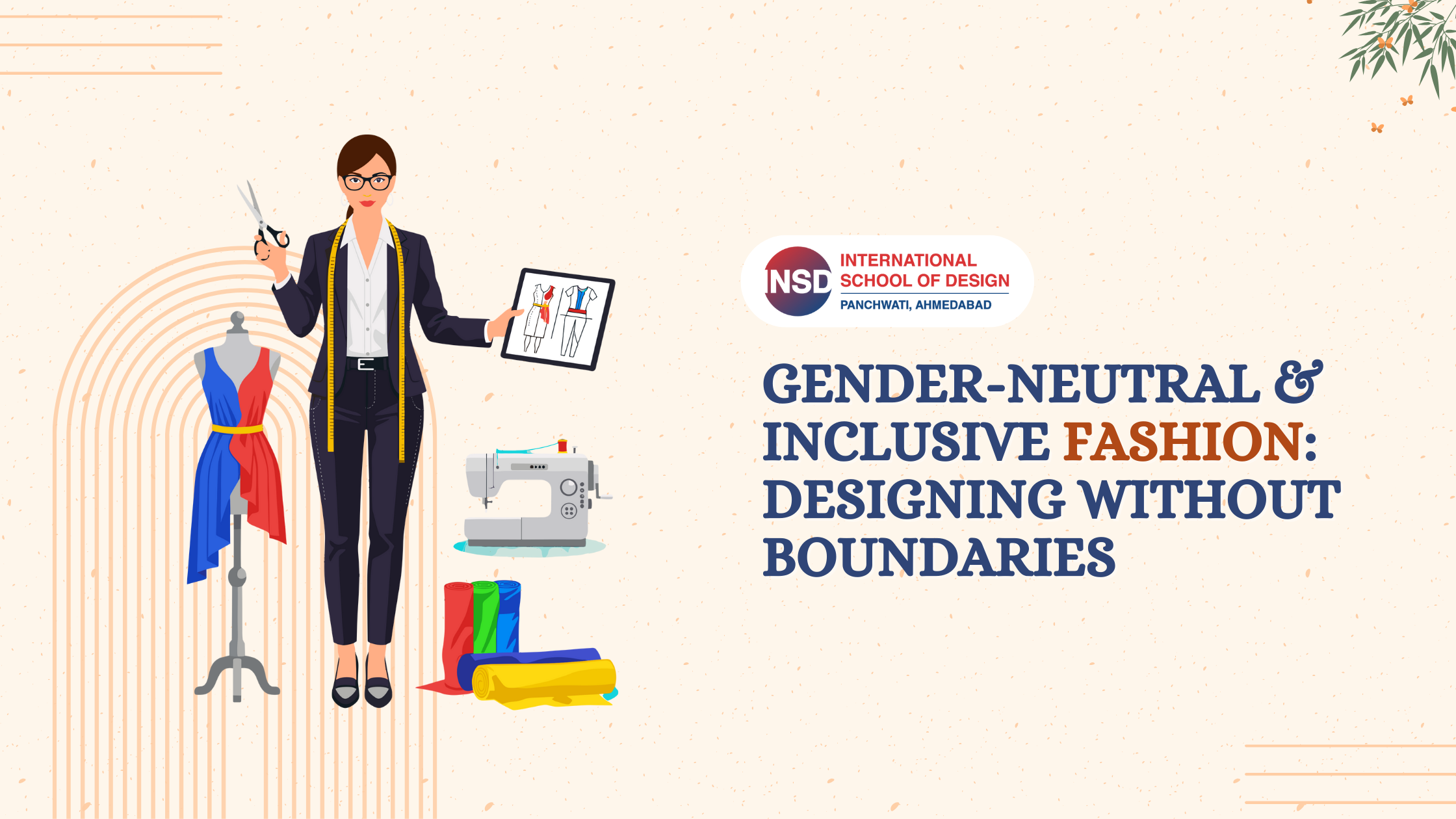The idea is not new. Many cultures across history have embraced silhouettes that were not gender specific. From draped garments in ancient civilizations to traditional robes, kimonos, lungis, kilts, and tunics, clothing was often functional rather than categorized.
What changed is the global fashion industry of the last two centuries, which formalised men’s and women’s collections. Now, we are simply returning to a more natural space where self expression comes first.
How Are Designers Responding to This Movement?
Designers around the world are adjusting their approach.
They are focusing on
- free flowing silhouettes
- adaptable patterns
- adjustable closures
- inclusive colour palettes
- relaxed fits
- multi use fabrics
- universal sizing
Students entering fashion in 2025 and 2026 will see demand for designers who understand inclusivity at a structural level. This includes pattern cutting, fabric behaviour, user psychology, and storytelling that respects identity.
What Are the Benefits of Designing Without Gender Labels?
There are several advantages for both designers and consumers.
- Greater creative freedom
When you are not limited by category, you think differently. Your imagination expands. - Broader audience reach
Gender neutral collections attract a wider customer base. - Higher comfort and functionality
Most inclusive garments prioritise movement and real daily needs. - Better sustainability
Timeless fits mean fewer seasonal limitations and longer wardrobe cycles. - Emotional connection
People feel more confident when clothing respects individuality.
Are Brands Changing Their Approach to Fashion Retail?
Yes, and the shift is visible everywhere.
- Some retail stores are now arranging outfits by style rather than gender.
- Many online platforms allow shoppers to filter by fit instead of category.
- Brands are featuring real consumers in campaigns rather than idealised models.
- Sizing charts are being redesigned to include more variations.
Inclusive design is becoming a business advantage, not just a social statement.
How Do Traditional Fashion Rules Evolve in a Gender Neutral World?
Rules around colour, silhouette, and fit are becoming less rigid.
Examples include
- suits tailored for all body types
- skirts designed with adjustable waistbands
- oversized hoodies considered universal
- pastel or neon colours worn by everyone
- jewellery styled without gender association
Fashion schools are already updating their curriculums to include these changes so students entering 2026 programs are better prepared.
What Role Does Cultural Influence Play in Inclusive Fashion?
Indian, Korean, African, Middle Eastern, and Southeast Asian cultures all have long histories of fluid clothing. Young designers often revisit these inspirations and modernise them in fresh ways.
This creates a beautiful blend
heritage meets individuality.
Inclusivity becomes a global creative language.
How Can Students Prepare for Inclusive Fashion Careers?
If you are planning to pursue fashion before the 2026 admissions cycle, here are simple steps to start.
- Study diverse body types
Understanding real bodies helps you design realistically. - Learn digital tools
AI powered design apps, 3D draping software, and digital illustration tools give you a strong advantage. - Research cultural clothing systems
They offer brilliant ideas for adaptable silhouettes. - Build an inclusive portfolio
Include sketches, digital mockups, and projects that reflect diversity. - Notice everyday fashion
People around you often show natural, honest style. That is valuable research.
Inclusivity starts with awareness and observation.
What Does the Future of Gender Neutral Fashion Look Like?
The future feels promising and more flexible than ever.
Expect growth in
- technical fabrics
- adjustable garments
- unstructured tailoring
- multi-use clothing
- inclusive retail layouts
- AI enabled size prediction
- hybrid digital and physical fashion experiences
Designers who understand inclusivity will shape the next decade of style. Fashion in 2026 and beyond will celebrate identity, comfort, and individual stories.
Final Takeaway
Gender neutral and inclusive fashion reflects how people want to express themselves today. It’s about comfort, identity, and creativity without restrictions. With AI powered tools and shifting cultural conversations shaping the industry, the future of fashion feels more open than ever. If you’re a young creative, this is the right moment to learn, observe, and design with a wider perspective.
If this direction inspires you, INSD Ahmedabad offers the guidance and environment to help you design with purpose. With flexible online and offline programs, mentorship, and industry focused training, INSD helps you shape ideas that respect individuality and reflect the fashion world of today and tomorrow.


